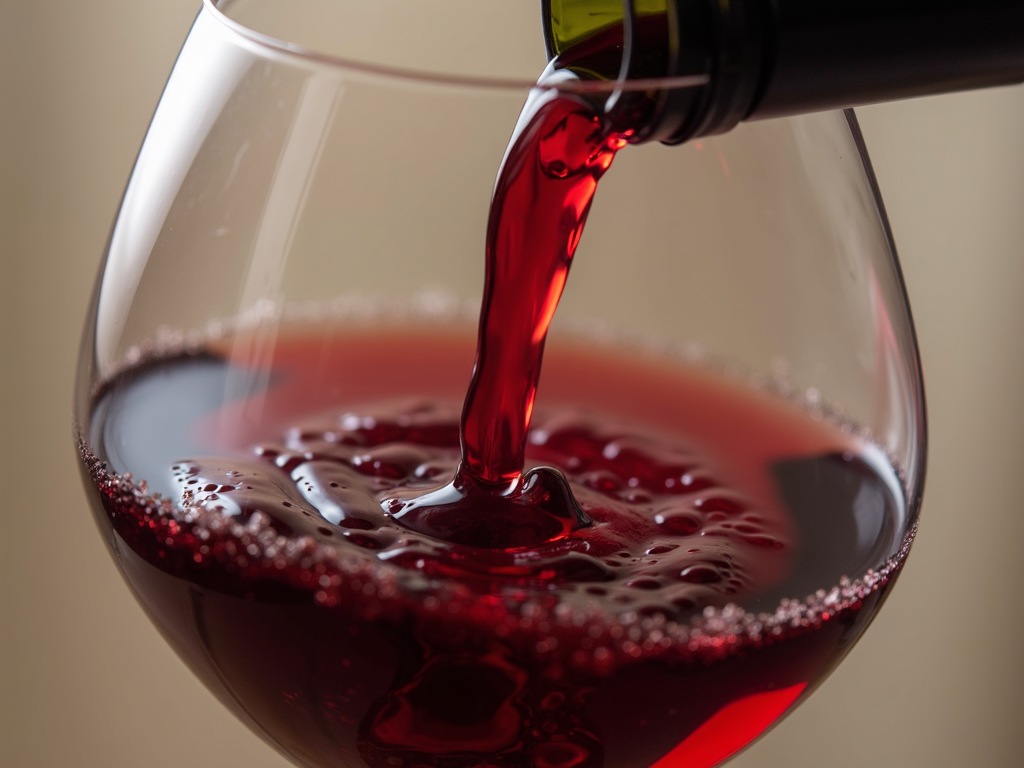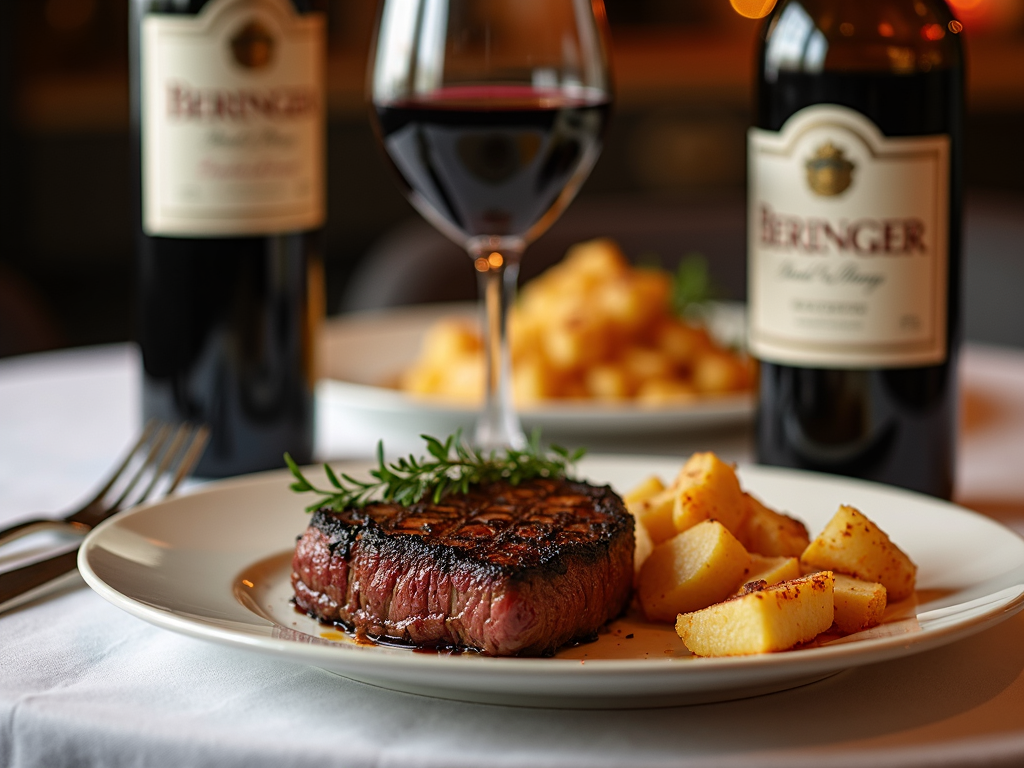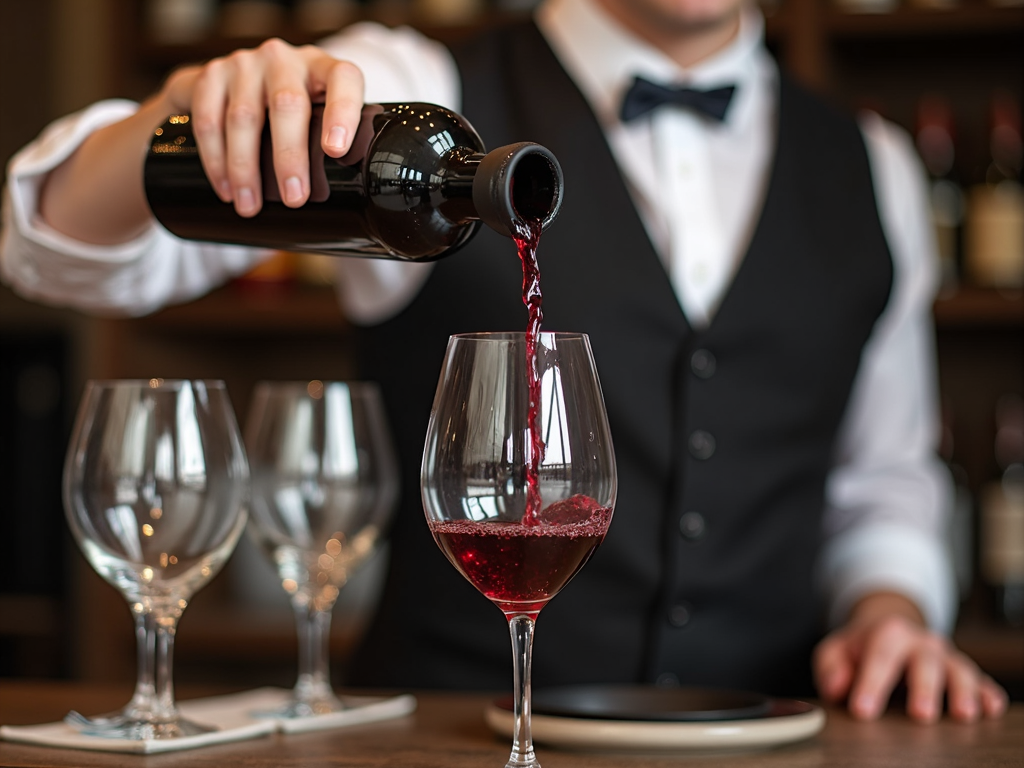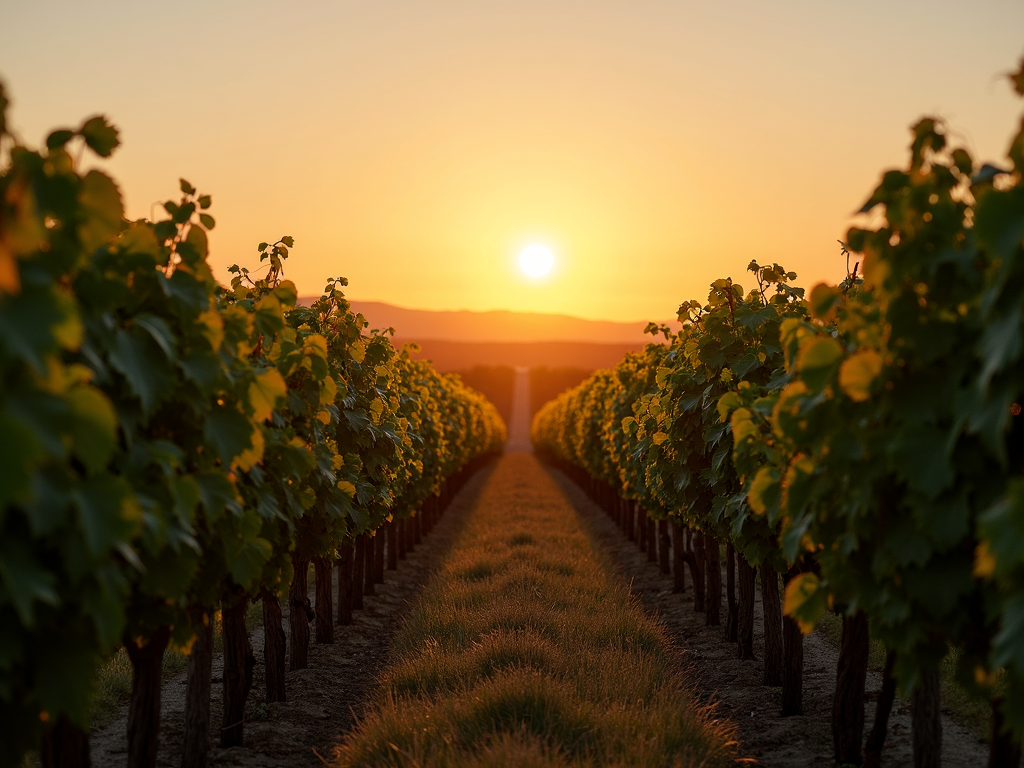Red Wine Pairings: Unlocking Flavors with Every Sip
Overview: Red wine pairings can elevate your dining experience, bringing out the best in both the wine and the food. In this article, we'll explore the art of wine pairing, share personal insights, and highlight top wine brands like Beringer. Whether you're a wine enthusiast or a beginner, you'll find valuable tips to enhance your next meal.

Main Content: Red wine pairings are an art form that can transform a good meal into a great one. The right wine can enhance the flavors of your food, while the wrong choice can leave you with a disappointing experience. In this section, we'll delve into the world of red wine pairings, exploring different types of red wine, their characteristics, and the best food pairings for each.
Let's start with the basics. Red wine is made from dark-colored grape varieties, and its flavor profile can range from light and fruity to bold and complex. Some popular types of red wine include Cabernet Sauvignon, Merlot, Pinot Noir, and Syrah. Each type has its unique characteristics, making them suitable for different food pairings.
Cabernet Sauvignon, for example, is a full-bodied wine with high tannins and flavors of dark fruit, such as blackberry and black cherry. It pairs well with rich, hearty dishes like steak, lamb, and aged cheeses. On the other hand, Pinot Noir is a lighter-bodied wine with lower tannins and flavors of red fruit, such as cherry and raspberry. It pairs well with lighter dishes like salmon, poultry, and mushroom-based dishes.
When it comes to pairing red wine with food, there are a few key principles to keep in mind. First, consider the weight and intensity of both the wine and the food. A heavy, full-bodied wine like Cabernet Sauvignon can overpower a light dish, while a light wine like Pinot pinpoint the food and wine. (FK for the food and wine industry jargon).
Another important factor is the flavor profile. Look for complementary flavors between the wine and the food. For example, a wine with fruity notes can pair well with dishes that have a touch of sweetness, while a wine with earthy notes can complement dishes with mushrooms or truffles.
For a deeper dive into the principles of wine pairing, check out the Wine Spectator's Guide to Wine Pairing.

Now, let's talk about unlocking flavors with every sip. One way to do this is by paying attention to the temperature of the wine. Serving red wine at the right temperature can enhance its flavors and aromas. Generally, full-bodied red wines like Cabernet Sauvignon should be served at around 60-65°F, while lighter red wines like Pinot Noir can be served slightly cooler, around 55-60°F.
Another tip is to decant the wine before serving. Decanting allows the wine to breathe, which can help to open up its flavors and aromas. This is especially beneficial for younger, more tannic wines.
Let's not forget about the glassware. Using the right glass can also enhance the wine's flavors. A larger, wider glass is ideal for full-bodied wines, as it allows more air to interact with the wine, while a smaller, narrower glass is better for lighter wines.

Now, I'd like to share a personal insight. One of my favorite red wine pairings is a glass of Beringer Cabernet Sauvignon with a juicy steak. The rich, bold flavors of the wine complement the savory, umami flavors of the steak perfectly. Beringer is a well-known wine brand that produces high-quality wines, and their Cabernet Sauvignon is a great choice for pairing with red meat.
Speaking of Beringer, let's take a moment to explore this wine brand. Beringer is one of the oldest and most respected wine brands in the United States, with a history dating back to 1876. They produce a wide range of wines, including red, white, and sparkling varieties. Their wines have received numerous awards and accolades, making them a popular choice among wine enthusiasts.
To learn more about Beringer wines, visit their official website or read a review of their Cabernet Sauvignon on Wine Enthusiast.
Now, let's move on to some specific red wine pairings. Here are a few examples to inspire your next dining experience:
-
Cabernet Sauvignon with grilled steak: The bold flavors of the wine complement the charred, savory flavors of the steak.
-
Pinot Noir with roasted chicken: The lighter body and fruity notes of the wine pair well with the tender, juicy chicken.
-
Merlot with pasta in a tomato-based sauce: The medium-bodied wine with its soft tannins and fruity flavors complements the acidity of the tomato sauce.
-
Syrah with spicy dishes: The bold, spicy notes of the wine can stand up to the heat of spicy foods.
Remember, these are just a few examples, and the possibilities are endless. Don't be afraid to experiment and find your own favorite pairings.

Before we wrap up, let's talk about some common mistakes to avoid when pairing red wine with food. One mistake is pairing a tannic wine with a sweet dish. The tannins can make the wine taste bitter when paired with sweetness. Another mistake is pairing a light wine with a heavy, rich dish, as the wine can get lost in the flavors of the food.
To avoid these mistakes, always consider the weight, intensity, and flavor profile of both the wine and the food. And remember, personal preference plays a big role in wine pairings, so don't be afraid to trust your own taste buds.
In conclusion, red wine pairings are an art form that can elevate your dining experience. By understanding the different types of red wine, their characteristics, and the principles of pairing, you can unlock flavors with every sip. Whether you're enjoying a glass of Beringer Cabernet Sauvignon with a steak or a Pinot Noir with roasted chicken, the right pairing can make all the difference.
If you're interested in the history of wine, the Smithsonian Magazine has an excellent article on the subject.
